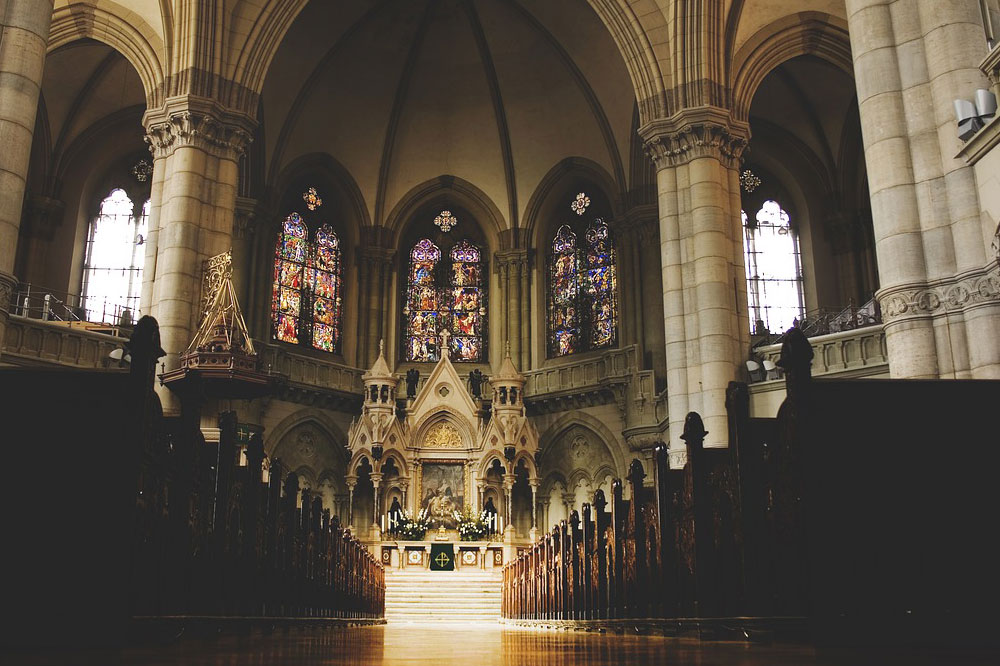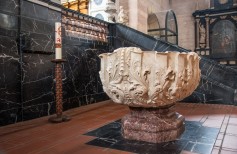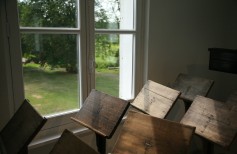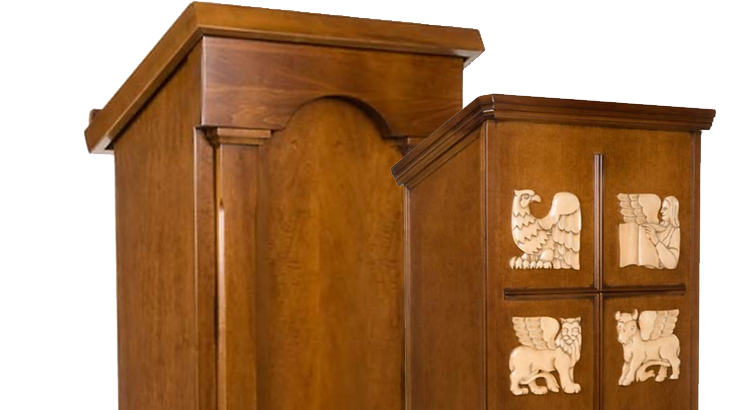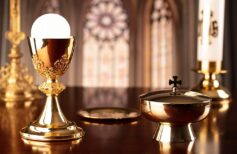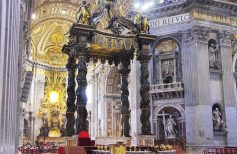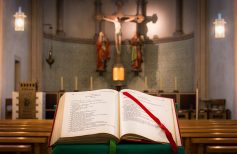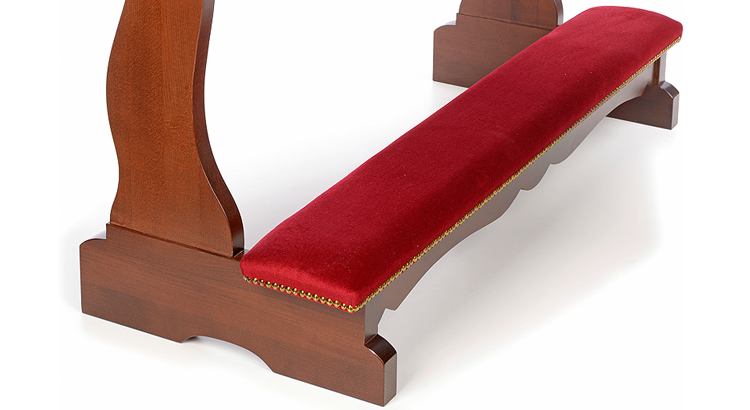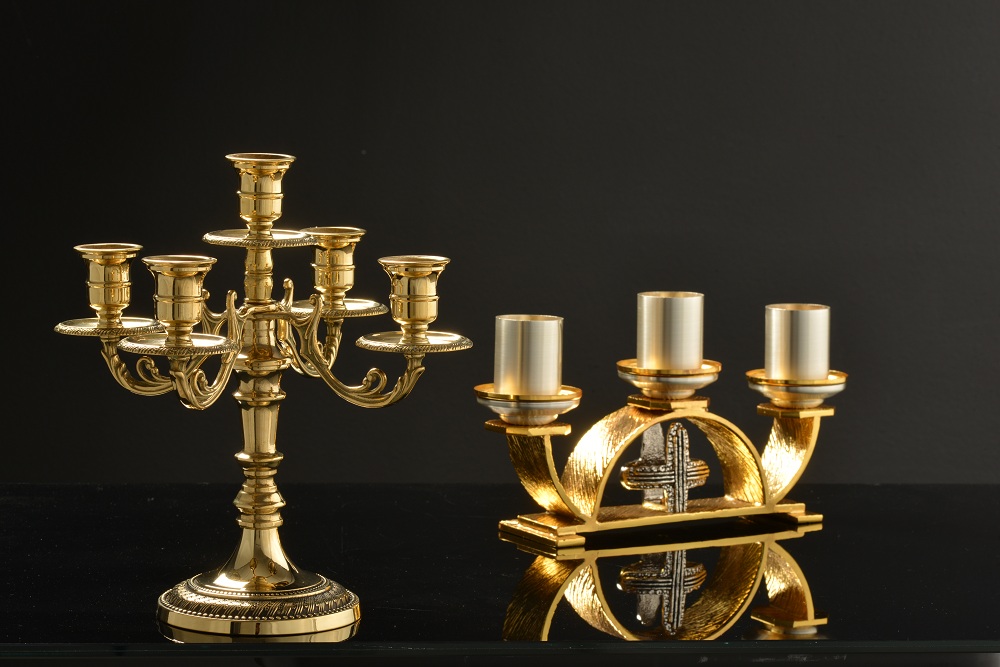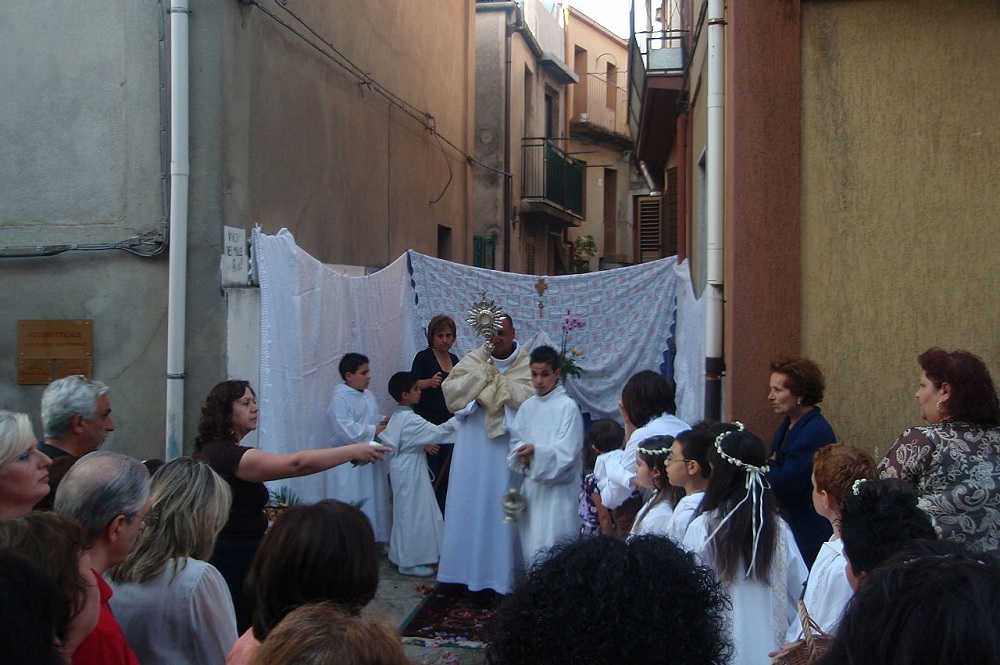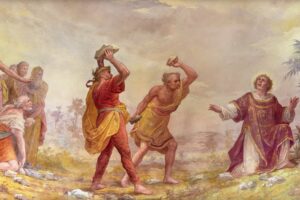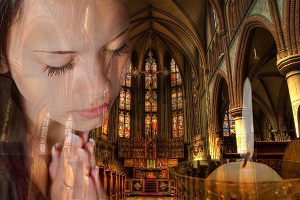Contents
The church is the place par excellence where Christians gather to share their faith and celebrate the related solemn rituals. Since its origins it was necessary to give it a special solemnity and sacredness. This was obtained by acting both on the architecture of the building itself, on its shapes and volumes already concealing many deep symbolisms and meanings, and on the choice of the disposition of sacred furniture that decorate the inside. Regardless of the historical period in which a church was built, or the architecture style it can be associated to, a church will have to be interpreted as an ideal scenography set to welcome liturgy. The building, the subdivision of spaces, even decorations of a church, have in fact the liturgic celebration as only and central cornerstone. We must take into consideration the historical and social setting in which a church developed. During ancient times, the architectural magnificence of a church, the opulence of its sacred decors, were justified by the fact that they were supposed to tell the magnificence and solemnity of the liturgy to men and women who had no culture, often unable to read nor write, nor to understand the mass celebrated in Latin. The evolution of the devotees throughout the centuries went along with the evolution of places of worship, with a progressive loss of the spectacular aspects of liturgy and celebrations. This makes the recognition of the changes in projects and planning of the place of worship even more fascinating, given the new necessities.
We will not linger much on the subdivision of spaces inside a church in this article. Briefly, we can generalize by saying that most of the ancient churches are composed of a great rectangular hall, or Latin Cross, divided into naves by lines of columns or pillars, always with an uneven number. The part of the church that is reserved to officials, the one where the altar is, is called presbytery; on its back, there can be one or more apses, semicircular or polygonal shaped structures, which can host the chair, which is the Bishop’s seat, and the subsellia, the presbyters’ desks. Ancient churches often have a transept, an architectural structure that crosses the central nave or all the naves on the presbytery line.
Every age, every culture, gave a particular interpretation on how a place of worship should look like, what it should convey. Some elements are always recurring, they stay as milestones, going through the history of Christianity, from the first paleochristian and medieval churches, to the modern steel and glass churches we see in our cities. Let’s talk about sacred furniture: altars, ambons, kneeling-stools, baptismal fonts, tabernacles, altar crosses, holy water fonts, and so on.
Int his article we will go over each one of them, trying to find their most authentic meaning in the church sphere, and the reason why they can never miss in a church. Let’s look at the specific aspects of the sacred furniture placed in the various areas of a church.
Door
The church door, whether big or small, majestic or discrete, carries a fundamental symbolic meaning. In fact, it symbolizes Jesus, a mandatory passage through which we have to go in order to reach God. It is not only a physical passage, but most of all spiritual. Those who enter the church door do so to leave the outside world behind their backs, even for a short time, with all its real, practical, external contingencies, in order to try to connect with their own inner reality, their soul, and through it, to God.
The mere fact of passing a church door implies the will to shake off your sins and place yourself in a state of grace. It is not by chance that church doors are decorated with engravings and sculptures that recall the Last Judgment and the concept of salvation.
Altar
The altar is surely the main element in any church. It is the cornerstone of the liturgic celebration, the symbol of the presence of God, since it’s on it that Christ’s sacrifice is repeatedly proposed. Every devotee expresses his own faith and participation to church life in front of it, not only by participating to the communion, but also by receiving the sacraments that are fundamental for his human and spiritual life.
Even during Pre-christian age, in other religions and cultures, the altar was a sacred furniture destined to welcome solemn sacrifices and faith vows towards men and gods. In the biggest Christian churches the altar can be surrounded by a ciborium, an architectural element shaped as a canopy.
A place of sacrifice then, and of solemn commitment, the altar can be made of various materials and have different shapes. Some altars are made of a whole stone block or brickwork, others of a marble slab placed on supports. There are stone, wooden and marble altars. In ancient times altars were often decorated with accurately chiseled panels, or with golden, silver or bronze sheets.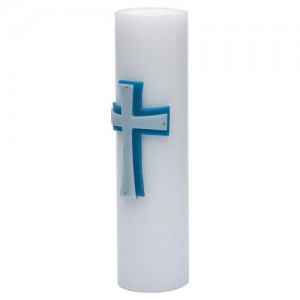
On the altar we can find many sacred decors that compose the supply of the altar itself: a table cloth for the altar, usually white to resemble the Last Supper table; the cross, symbol of Jesus sacrifice, of His death and Resurrection; the candles, or altar candles, that symbolize His presence and to some extent, His double nature of God and Man. The cross and candelabra are often coordinated. On the altar we celebrate the presence of Jesus (candles), His sacrifice (cross), and His promise of salvation for all mankind, with the offer of His body as bread (table cloth).
The arrangement of the altar table cloth, of the cross and candles is never random. Every gesture and placing are essential elements of the liturgic mystery, and as such they have to be considered. These objects in particular symbolize the presence of Christ at the altar, making it the perfect place for His sacrifice.
In particular, the cross has to be central compared to the two candle holders or candles. In order to make the liturgic celebration easier for the priest, in some cases the cross can be placed in front of or next to the altar, flanked by the two candle holders, but generally their arrangement should be on the altar itself and on the cloth set to host them.
The altar can also be left bare, but only on Holy Friday and Saturday, to symbolize the Passion of Christ.
An alternative to the altar cross can be the processional cross. This cross is similar to the one placed on the altar, but it is fixed on a pole about 2 meters long. It is used during processions, held by a crucifer, and once the procession reaches the altar it can become the altar cross itself.
Ambon, pulpit and lectern
Other scared decors that cannot miss in a Christian church are the ambon, the pulpit, and the lectern.
The Ambon is a structure placed on some steps, from where the lectures are read. In ancient times it was placed quite high, made of brickworks, wood or marble, closed on three sides with stairs on one side, or even two stairs, and sometimes it even had gates. Usually the ambon was placed on the right side of the main nave. It happened often that in the church there were two ambons, one dedicated to the espistolary readings, one to the Gospel readings. In general, the reader, the psalmist and the deacon could access the ambon. Ancient ambons were made of wood, but soon became much bigger and majestic, and were made of marble and enriched with sculptures and covered in precious metals.
Different form the ambon which is destined only to readings, is the Pulpit, destined to sermons.
The Pulpit was a kind of mezzanine placed in the main nave of the church from which the priest spoke to be heard by everyone. Today, with modern amplification systems in churches, its use is mostly decayed.
The Lectern is a sort of smallest version of the Ambon and the Pulpit. It is a structure, usually made of wood or wrought iron, destined to support a book, usually the Bible.
Kneeling-stool
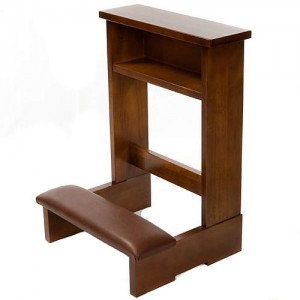
The Kneeling-stool is a wooden piece of furniture with a step or a platform, on which people kneel to pray. The step is often stuffed, as the support for hands, and the kneeling-stool can be accurately carved and decorated.
Holy Water and Baptismal fonts
The Holy Water Font is a container filled with holy water. It is usually a tub placed on top of a column, a pedestal or even a sculpture (pile holy water font) or fixed to the wall (sealed holy water font) close to the entrance of the church. People entering the church can dip their fingers into the font and make the sign of the cross.
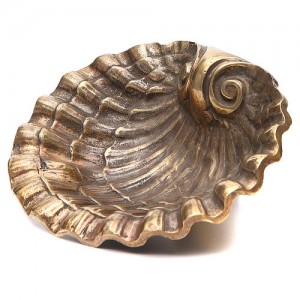
The Baptismal Font is a tub, usually placed on one side of the nave, in a side chapel or a building next to the church, the Baptistery. It is used to give the Baptism through the infusion of the water on the forehead, while in ancient times, recalling Jesus Baptism, it was a real immersion into the Baptismal font. The water inside the baptismal font is considered symbol of life and sign of Christ, and thanks to it we are awarded with rebirth, washing us clean from the original sin.
Tabernacle – the Lamp of the Blessed
The Tabernacle is a container placed in every Christian church where the consecrated hosts are stored, usually inside a pyx, a box with a foot and a lid. There are wall Tabernacles (recess) and table Tabernacles (boxes placed on other structures). Next to the Tabernacle there is an always burning lamp, called Sanctuary Lamp, symbolizing the presence of God. For the Jewish the tabernacle was the holy place that hosted the Ark of Alliance. 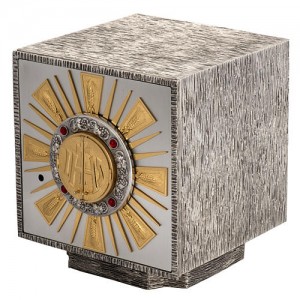 Still today in Christian churches the tabernacle is covered with a veil called canopy, recalling the tent that covered the Jewish tabernacle. The access to the tabernacle is reserved to presbyters and deacons, while it is usually locked as the canonical right codex says.
Still today in Christian churches the tabernacle is covered with a veil called canopy, recalling the tent that covered the Jewish tabernacle. The access to the tabernacle is reserved to presbyters and deacons, while it is usually locked as the canonical right codex says.
Cathedra
The seat or throne on which the Bishop seats in a church is called Cathedra, and is symbol of the authority and power of the Bishop himself. In fact, when the Bishop seats on the Cathedra, everything he says is as inspired directly by God, as if he did nothing but give voice to His will.
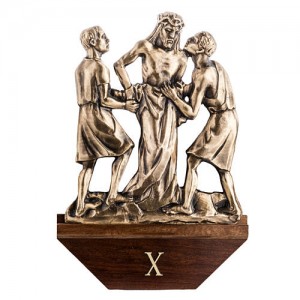
Via Crucis
Even the Via Crucis can be considered as a real sacred decor. All churches and places of worship have one, inside or outside. They are 14 pictures, sometimes 15 because some Via Crucis consider also the final stage when Christ resurrected, and they remember the Passion of Christ and his painful path towards crucifixion and death. The Via Crucis was born in medieval age as penitence path for those who could not go to pilgrimage in the Holy Land, in the places that actually saw the passion of Christ. The stations of the Via Crucis are usually composed of pictures made of wood, marble, stone, bronze and so on.

